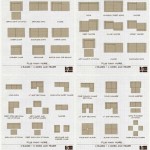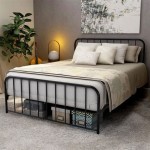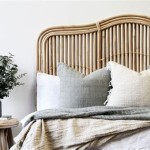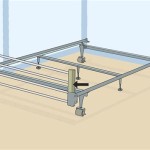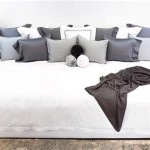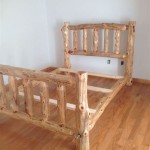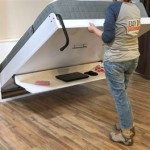Plywood for Queen Bed Bases: A Durable and Versatile Option
A queen bed base is a critical component of a comfortable and supportive sleep setup. When selecting a bed base, many factors come into play, including strength, durability, and affordability. Plywood has emerged as a popular material for bed bases due to its numerous advantages. This article explores the benefits of using plywood for queen bed bases, providing insights into its construction, durability, and versatility.
Strength and Stability
Plywood's inherent strength and stability make it an ideal material for bed bases. Plywood sheets are constructed by layering thin veneers of wood, with the grain direction of each layer alternating. This cross-grained structure provides exceptional strength and resistance to warping or bending. Unlike solid wood, which can crack or split under stress, plywood's layered construction distributes weight evenly, ensuring a sturdy and reliable bed base.
The strength of plywood is crucial for supporting the weight of a queen-sized mattress and the occupants. It provides a stable platform that prevents sagging, creaking, or instability, ensuring a comfortable and peaceful sleep experience. Plywood's ability to withstand heavy loads also makes it suitable for constructing bed frames that can support multiple occupants or heavier mattresses.
Durability and Longevity
Plywood is renowned for its durability and longevity. This is attributed to its layered construction, which enhances its resistance to wear and tear. The alternating grain direction creates a strong and rigid material that can withstand the everyday stresses of use. Plywood is not susceptible to cracking or splitting, making it a highly durable material for bed bases.
Plywood's durability extends its lifespan, making it a value-for-money investment. Unlike materials like particleboard or MDF, which can deteriorate over time, plywood maintains its structural integrity for years to come. A plywood bed base can serve multiple generations, providing a reliable and long-lasting foundation for comfortable sleep.
Versatility and Customization
Plywood's versatility makes it an excellent material for customizing bed bases to meet specific needs and preferences. Its smooth surface allows for various finishes, from paint or stain to veneer applications. Plywood can be cut, shaped, and assembled to create unique bed base designs that complement any bedroom decor.
Plywood's adaptability extends to different bed base styles. It can be used to construct traditional slatted bed bases, platform bases, or even custom-designed bases with integrated storage solutions. The ability to tailor plywood to suit specific requirements allows for crafting personalized bed bases that enhance both functionality and aesthetics.
Cost-Effectiveness
Plywood is a cost-effective material for building queen bed bases. Compared to other materials like solid wood, which can be significantly more expensive, plywood offers a balance of affordability and quality. Plywood's strength and durability ensure it provides a reliable and long-lasting bed base without breaking the bank.
The cost-effectiveness of plywood is particularly advantageous for DIY projects. Individuals can build their own bed bases using readily available plywood sheets, saving on the cost of pre-made bed bases. This approach allows for customizing the base to meet specific size or design requirements, ultimately contributing to a more affordable and personalized sleep setup.
When selecting plywood for a queen bed base, it's important to consider the type and grade. Sanded plywood, with its smooth surface, is ideal for finished bed bases. For more robust construction, consider marine-grade plywood, known for its water resistance and durability. The thickness of the plywood will depend on the bed base design and weight it needs to support.

How To Choose Plywood For Bed Frames

How To Build A Modern Platform Bed For 125 Diy Beautify Creating Beauty At Home
Diy Plywood Bed Modern Builds

Diy Plywood Bed Modern Builds
What Is The Best Quality Of Wood To Make A Plywood Bed Frame Quora

Diy Plywood Bed Modern Builds

How To Build A Modern Platform Bed For 125 Diy Beautify Creating Beauty At Home

Diy Bed Frame Wood Headboard 1500 Look For 200 A Piece Of Rainbow

Bed Slats Vs Plywood Which Is Best For Your Frame

Queen Double Bed Frame Of Plywood With Openable Headboard 2 Drawers And Storage Compartments At The Bottom Furniture Home Living Frames Mattresses On Carou
